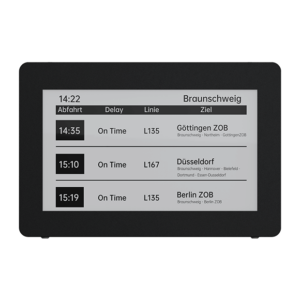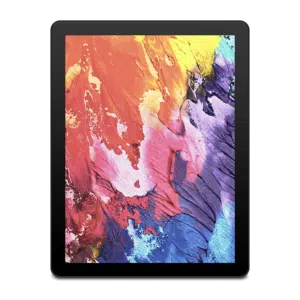The Environmental Benefits of Using Electronic Paper Displays
The Environmental Benefits of Using Electronic Paper Displays
Blog Article
Display engineering is now an integral part of our everyday lives, showing in sets from smartphones and e-readers to large-scale marketing panels. One of the diverse range of E paper display, OLED (Organic Light-Emitting Diodes), and LED (Light-Emitting Diodes) have appeared as some of the most widely discussed options. While each type provides its own special function, their differences in functions, effectiveness, and use cases make them ideal for particular applications. Let's take a closer look at the crucial faculties of the display technologies.
Electronic Paper displays (ePaper)
Electronic Paper displays, also referred to as ePaper or Electronic Ink displays, are created to copy the looks and readability of old-fashioned Ink on paper. That engineering employs little microcapsules comprising priced dark and bright particles halted in a definite fluid. When a power subject is applied, the particles go on to each side of the pill, producing a visible image. The picture remains fixed until yet another electric area is applied, which makes it ideal for showing text-based material such as books, newspapers, and e-readers.

One of the major features of ePaper displays is their reduced power consumption. Unlike standard LCD
Understanding Electronic Paper displays
An electronic Paper display (ePaper) mimics the appearance of Ink on paper. Unlike old-fashioned monitors, ePaper utilizes their capability to reflect surrounding gentle as opposed to emitting its own. That engineering not only decreases vision strain but also gives unmatched readability in sunshine, making it suitable for e-readers and digital signage solutions.
One standout feature of ePaper displays is their extremely low energy consumption. Since they only use power when changing content, ePaper monitors are very effective and suited to battery-powered devices. Nevertheless, their renew costs are slower compared to OLED and LED displays, limiting their applicability to static or minimally energetic content.
OLED displays
OLED displays are noted for their gorgeous visual quality, providing vivid shades, serious blacks, and excellent contrast. Each pixel in an OLED display emits a unique gentle, eliminating the need for a backlight. This not just enables thinner, more lightweight models but in addition benefits in greater power efficiency compared to LED using scenarios.
One important advantage of OLED displays is their flexibility. They can be produced in circular or collapsible models, creating them popular in cutting-edge smartphones and wearable devices. Nevertheless, OLED monitors include issues, such as susceptibility to burn-in and faster lifespans compared to different technologies.
LED displays
LED displays, the most common of the three, rely on a backlit system to gentle their pixels. Without as creatively striking as OLED E ink sign, LEDs are extremely tough, long-lasting, and cost-effective. These qualities make sure they are suited to a larger array of applications, including TVs, pc displays, and outdoor advertising.
LED displays an average of perform properly with regards to brightness, making them a great choice for settings with high surrounding light. But, they fall short in reaching exactly the same heavy distinction and color reliability as OLED technology.

Ultimate Comparison
When determining between ePaper, OLED, and LED displays, the option depends mainly on the supposed purpose. For fixed material like examining or signage, ePaper excels using its minimal energy use and high awareness in normal light. OLED shines in purposes where vibrant shades and mobility are paramount. Meanwhile, LED stays a trusted and cost-efficient option for a number of general-purpose needs.
Each display engineering provides something distinctive to the table, ensuring that there is a perfect selection for every situation. Knowledge these differences might help customers and corporations produce knowledgeable decisions that match their certain display requirements. Report this page